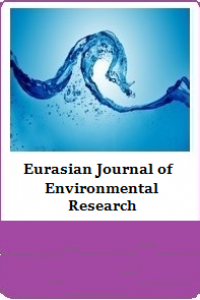Öz
Due to the mushrooming of industrial
activities nowadays, the released contaminants have posed risks to the
stability of ecological system. In particular, the mixture consisting of
colourants used in the textile industry and water resources is detrimental to
human health. In order to circumvent this problem, strategies such as
precipitation, membrane filtering, adsorption and electrochemical procedures
have been applied. It is commonly known that adsorption is economical,
eco-friendly and easy to operate. In this study, microalg, which is a kind of
cyanobacteria (i.e. Spirulina plantensis), was used to eliminate azo-dyes from the aqueous solution via
adsorption. Microalg was tested at various conditions (i.e. pH, dye
concentration, temperature, biomass amount and contact time). The removal
percentages of Acid Black 210 and Acid Blue 7 dyes by
using microalg biomass at pH=2 were 95.35 % and 92.56 %, respectively.
Meanwhile, conditions such as 100 mg/L dye concentration and 0.5 g/L biomass
would lead to removal percentages
of 98.55 % and 97.05 % for Acid
Black 210 (60 minutes contact time) and Acid Blue 7 (75 minutes contact time),
respectively. The spectrofotometric measurements show that adsorption method
has a great potential for removing colourants in aqueous solutions. It could
serve as an alternative method for.
Anahtar Kelimeler
Ayrıntılar
| Konular | Yapısal Biyoloji |
|---|---|
| Bölüm | Articles |
| Yazarlar | |
| Yayımlanma Tarihi | 1 Ağustos 2017 |
| Gönderilme Tarihi | 16 Ağustos 2017 |
| Yayımlandığı Sayı | Yıl 2017 Cilt: 1 Sayı: 1 |
Kaynak Göster
Creative Commons License
Attribution-NonCommercial-ShareAlike 4.0 International (CC BY-NC-SA 4.0)

Creative Commons Attribution-NonCommercial-ShareAlike (CC BY-NC-SA) License lets others remix, tweak, and build upon the work non-commercially, as long as they credit the author(s) and license their new creations under the identical terms.


